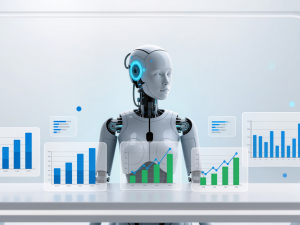When Students Become the Evaluators
Imagine turning in your essay on climate ethics or cybersecurity and instead of waiting days for your professor’s red-ink comments, you get feedback within minutes. The twist? It’s not from your teacher. It’s from your classmates guided by an AI system that checks clarity, coherence, and rubric alignment before their comments even reach you.
Welcome to the age of AI-driven peer review, where algorithms don’t just grade; they coach students to grade.
Across universities and online platforms, this hybrid system is quietly reshaping how learning feedback works. Instead of a single teacher evaluating hundreds of papers, students assess each other’s work using AI-assisted rubrics. The software scans for logical flow, grammar, and argument quality while students add their human touch by judging creativity, tone, or insight.
Supporters say it’s the best of both worlds: faster, fairer, and more transparent feedback that builds both skill and confidence. Critics, however, see potential pitfalls from algorithmic bias to students becoming overly reliant on machine judgment.
The question, then, is one that goes beyond technology:
Can AI really help students grade each other more fairly, or are we just trading one kind of bias for another?
Why Peer Review Exists and Why It’s Flawed
Peer review wasn’t designed to replace professors, it was meant to multiply learning. When students review each other’s work, they don’t just evaluate; they reinforce their own understanding of the subject. Reading someone else’s essay, lab report, or design project often clarifies what “good work” looks like far better than a lecture ever could.
It’s also practical. In large classes with hundreds of students, having peers grade assignments helps instructors manage time while giving everyone feedback faster. Studies have even shown that students tend to value peer feedback because it feels more relatable and conversational than faculty comments.
But for all its educational benefits, traditional peer review has always struggled with one big issue: fairness.
Some students grade too kindly; others, too harshly. Personal friendships, rivalries, or even unconscious biases can skew evaluations. And without training or clear rubrics, feedback can be inconsistent or worse, unhelpful.
A student might spend hours crafting a thoughtful review, while another rushes through it in five minutes. The result? Uneven assessments that frustrate both students and instructors.
That’s where AI enters the chat not to replace human judgment, but to referee it.
How AI Is Changing Peer Review
AI tools are transforming how feedback happens and more importantly, how fair and useful that feedback feels.
Instead of leaving peer review entirely up to chance, AI systems can now step in as assistants, moderators, and mentors in the process. Here’s how it’s changing the game:
1. AI as the Equalizer
Machine learning models can evaluate patterns across all submissions, catching inconsistencies, bias, or overly generous/harsh scores. They act as a calibration layer, ensuring no student’s grade depends solely on who reviewed their work.
2. Instant, Actionable Feedback
AI tools like Grammarly, Turnitin Draft Coach, or built-in LMS analytics give students real-time feedback on tone, clarity, and structure before their peers even see it. That means by the time human reviewers weigh in, the work is already more polished, leading to deeper, more meaningful critiques.
3. Better Reviewer Training
Some platforms now use AI to coach reviewers suggesting what kind of comments add value (“Try explaining why this section is unclear” instead of just saying “unclear”). This transforms peer review from a one-off task into a learning experience for both sides.
4. Reduced Instructor Load
AI doesn’t just automate grading; it helps instructors focus where their expertise matters most. Instead of reviewing every draft, professors can use AI summaries to identify patterns like common writing issues or misunderstood concepts and address them in class.
Together, these features don’t replace the human side of feedback, they amplify it. Students still get peer perspectives, but now those insights are guided by data-driven fairness and consistency.
The result? Peer review that actually feels fair, fast, and formative.
The Ethical and Emotional Side of AI Feedback
For all its efficiency, AI-driven grading comes with a catch: it can sound fair but feel cold.
And in education, how feedback feels can matter as much as what it says.
1. The Human Touch Still Counts
Students often interpret tone and intent as part of feedback. A peer saying, “I really liked your argument, but…” hits differently than an AI comment that simply flags “unsupported claim.” Without empathy, even accurate feedback can feel dismissive or robotic which may discourage students instead of motivating them.
2. Data Bias, Repackaged as “Fairness”
AI systems are trained on existing data and if that data contains bias (say, favoring a certain writing style or linguistic pattern), the system can reinforce those patterns under the guise of “consistency.” That’s a subtle but serious ethical concern, especially in global classrooms where diversity of expression is the point.
3. Privacy and Trust Issues
Some students worry that AI tools might store or reuse their work. Without transparency on how data is handled, even the best AI review system can feel intrusive. Ethical deployment requires clear policies on consent, storage, and deletion or else, it risks losing student trust.
4. The Emotional Impact of “Machine Judgement”
There’s something psychologically different about being graded or even commented on by a machine. Some students find it liberating (“No judgment!”), while others feel reduced to a data point.
The ideal setup? AI assists, humans affirm. Feedback that blends objective AI scoring with subjective peer empathy keeps students engaged without losing the fairness factor.
The Sweet Spot: Blending AI and Human Insight
The future of grading isn’t about humans versus AI, it’s about humans with AI.
Because while algorithms bring precision and consistency, it’s the human element that adds empathy, nuance, and encouragement.
1. AI as the Co-Pilot, Not the Driver
Think of AI as a teaching assistant who never gets tired or biased but still needs direction. When instructors use AI to handle repetitive parts of grading (like grammar checks or rubric alignment), they free up time for what really matters: mentoring and meaningful feedback.
2. Peer + AI = Double Perspective
Platforms like PAIRR (Peer and AI Review + Reflection) are already proving that two heads: human and machine are better than one.
Students get AI-generated feedback on structure, logic, and clarity, plus peer insights on creativity and tone. Together, it’s a more rounded and realistic form of assessment.
3. Teaching Students to Evaluate Feedback
A huge side benefit of AI-driven peer review is meta-learning students don’t just write better, they think better about how to give and receive feedback. When learners reflect on where AI got it right (or wrong), they become more critical thinkers and better collaborators.
4. The Role of Instructors in the Loop
Educators still set the tone. They design the rubric, train the AI on what “good work” means, and intervene when the system misfires. That oversight keeps the technology accountable and ensures the classroom stays a space for growth, not just grading.
5. A Win-Win for the Future Classroom
In the long run, hybrid models could redefine what fair grading looks like, objective where it counts, personal where it matters.
AI ensures consistency. Humans ensure compassion. And together, they help learning feel both measurable and meaningful.
Conclusion: Can Students Grade Each Other Fairly?
So can students really grade each other fairly?
The honest answer is — with help, yes.
When AI steps in to guide the process keeping reviews consistent, flagging missed details, and holding everyone to the same standard it levels the playing field. But when humans stay in the loop interpreting nuance, recognizing creativity, and offering empathy it keeps grading humans.
AI-driven peer review isn’t about taking power away from teachers or students. It’s about sharing that power distributing it between data-driven systems and thoughtful learners. Because fairness in education isn’t just about how we measure work; it’s about how we value effort, growth, and understanding.
If done right, peer review with AI could do more than just save instructor time, it could build trust, accountability, and collaboration in the classroom.
After all, the goal of education isn’t just to get the grade. It’s to learn how to learn together.






